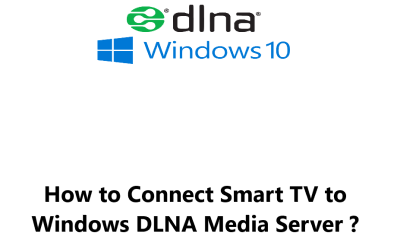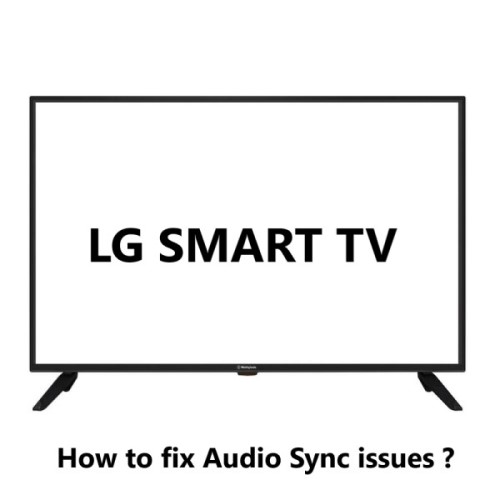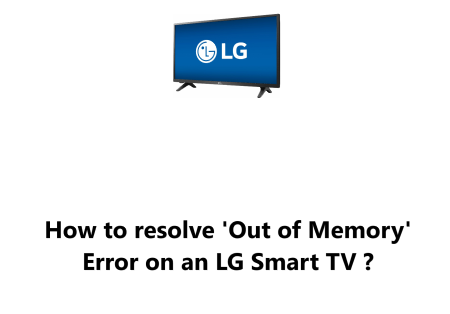Connect Smart TV to Windows DLNA Media Server - How to do it ?
Smart TVsDLNA (Digital Living Network Alliance) is a standard that allows devices to share media files over a network. This means that you can use your computer as a media server to stream movies, music, and photos to your Smart TV.
Here at Fixwebnode, We will show you how to connect your Smart TV to a Windows DLNA media server.
Table of contents [Show]
What you need:
- A Windows computer with the latest version of Windows installed.
- A Smart TV that supports DLNA.
- A network connection.
How to Connect your Smart TV to Windows DLNA Media Server ?
Step 1: Enable Media Streaming on your computer
- From the Start Menu, open Settings and then select Network & Internet.
- Once there, select either Ethernet (for a wired connection) or Wi-Fi (for a wireless connection) on the left side.
- Next, look for and select "Media Streaming Options".
- Click on the "Turn on media streaming" button.
- Give your media library a name and click on the "OK" button.
Step 2: Connect your Smart TV to the same network as your computer
- Make sure that your Smart TV is connected to the same network as your computer.
- You can do this by going into the Network settings on your Smart TV and selecting the same network that your computer is connected to.
Step 3: Ensure we're sharing the files we want to share
More times than not, this has already been configured, yet it would be prudent to double check.
- Begin by opening File Explorer and select This PC on the left side, followed by the Videos folder on the right.
- Once the movies stored here are visible, check that their titles are appropriate and understandable.
- Then, Move or Transfer any other movies that you want to be able to play into this folder. This folder is the location your other devices will see when browsing for videos to play.
Step 4: Browse for the DLNA server on your Smart TV
Once your Smart TV is connected to the same network as your computer, you should be able to browse for the DLNA server.
The exact steps for doing this will vary depending on your Smart TV model.
In general, you will need to open the media player app on your Smart TV and then select the "DLNA" option.
That is:
- On your remote, press the Menu or Sources button and choose Apps for your Smart TV.
- From here, select the Media Player or DLNA player and look for your computer in the list of available devices.
- Once you've identified and chosen to connect to your computer, go to the next step.
Step 5: Select the media files you want to stream
Once you have found the DLNA server on your Smart TV, you will be able to see a list of all the media files that are shared on your computer.
- Select the media files that you want to stream and then click on the "Play" button.
Note: Don't forget to leave your computer turned on while watching.
Troubleshooting issues encountered while connecting your Smart TV to Windows DLNA Media Server ?
If you are having trouble connecting your Smart TV to the DLNA server, there are a few things you can check:
1. Make sure that your Smart TV and computer are connected to the same network. This is the most common cause of problems when connecting to a DLNA server. You can check the network settings on your Smart TV and computer to make sure that they are both connected to the same network.
2. Make sure that the media streaming feature is enabled on your computer. You can check this in the Windows Media Player settings.
3. Restart your Smart TV and computer. This can sometimes fix problems with connectivity.
4. Check the firewall settings on your computer. Make sure that the firewall is not blocking the DLNA traffic.
5. Try using a different media server software. There are a number of different DLNA media server software options available. If you are having problems with one software, you can try using a different one.
6. Contact the manufacturer of your Smart TV for support. If you have tried all of the above troubleshooting tips and you are still having problems, you can contact the manufacturer of your Smart TV for support.
7. Make sure that the media files you want to stream are compatible with your Smart TV. Not all media files are compatible with all Smart TVs. You can check the compatibility list for your Smart TV to see what file formats are supported.
8. If you have a large media library, you can create folders to organize your files. This will make it easier to find the files you want to stream.
9. You can also use a DLNA media server to stream media files to other devices, such as smartphones and tablets. This is a great way to share your media library with others.
10. Check the network settings on your Smart TV and computer. Make sure that they are both using the same IP address and subnet mask.
11. Try restarting your router. This can sometimes fix problems with network connectivity.
12. Try using a different port for the DLNA server. The default port for DLNA is 1900, but you can try using a different port if that one is not working.
In Fact, we have shown you how to connect your Smart TV to a Windows DLNA media server. This is a great way to stream your favorite media files to your TV, including movies, music, and photos.
The steps involved are simple and easy to follow. First, you need to enable media streaming on your computer. Then, you need to connect your Smart TV to the same network as your computer. Finally, you need to browse for the DLNA server on your Smart TV and select the media files you want to stream.
If you are having trouble connecting your Smart TV to the DLNA server, there are a few things you can check. Make sure that your Smart TV and computer are connected to the same network. Make sure that the media streaming feature is enabled on your computer. Restart your Smart TV and computer.
Here are some additional tips for using a DLNA media server:
- Make sure that the media files you want to stream are compatible with your Smart TV.
- If you have a large media library, you can create folders to organize your files.
- You can also use a DLNA media server to stream media files to other devices, such as smartphones and tablets.
If you are still having trouble, you can consult the user manual for your Smart TV for more help.
We hope this guide has been helpful and that you enjoy using your DLNA media server !








